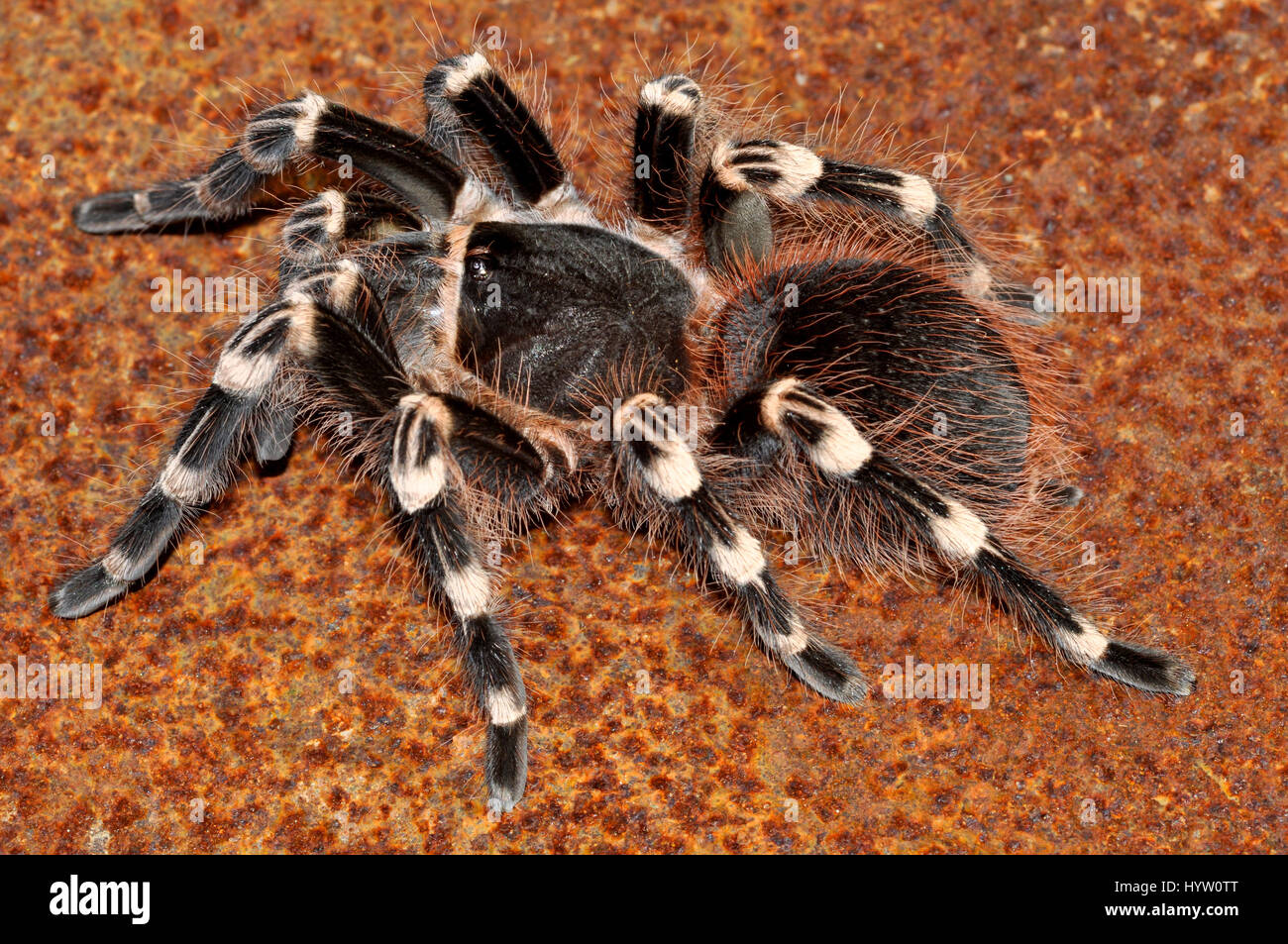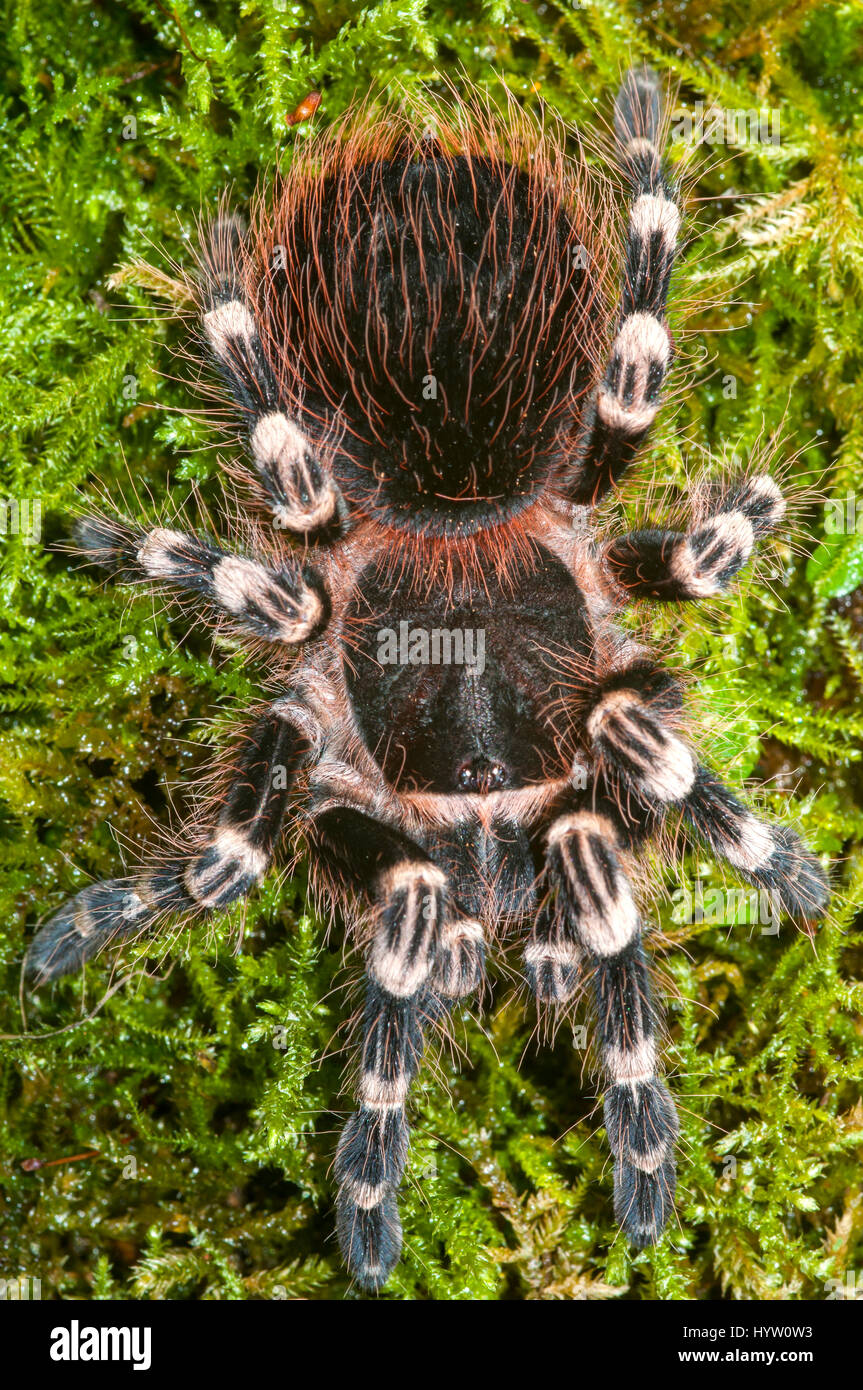
Acanthoscurria Geniculata handling (Brazilian white knee tarantula) [HD] YouTube
Giant white knee tarantula care sheet at a glance. Common names: Giant white knee tarantula, Brazilian white knee tarantula, Brazilian giant white knee. Scientific name: Acanthoscurria geniculata. Country: Brazil. Captive-bred: Yes. Adult size: 18-22cm (7-8") Natural habitat: Rainforest habitats. Housing: 45 x 45 x 30cm (18 x 18 x 12")

Brazilian White Knee Tarantula Spider Steam Punk Iron on Patch
Imagine yourself stepping into the extraordinary world of the vibrant Brazilian giant white knee tarantula. This captivating article will take you on a journey to uncover the natural habitat and range of this remarkable arachnid. From the lush forests of Brazil to its fascinating behaviors and unique characteristics, you will discover the.

Brazilian Whiteknee tarantula Cincinnati Zoo & Botanical Garden®
The Brazilian White Knee Tarantula is a large spider with black and white banded legs, living in the forests of Northern Brazil. They need a tank with wet and dry areas , warm temperatures between 76-80 degrees Fahrenheit, and shelters to hide in. These tarantulas eat insects like crickets, roaches or mealworms.

Brazilian Giant White Knee Tarantula (Acanthoscurria Geniculata) Female Stock Photo Alamy
As the name suggests, Acanthoscurria geniculata is South American tarantula species. Originally described in 1841 by Koch, they are typically found in the Amazon rainforest areas of Brazil. Published field studies have noted specimens in Roraima, in the C arajás region and in Floresta Nacional de Caxiuanã.

Tarantula Tarantula, Spider, Exotic pets
Popularly touted as the 'Giant Whiteknee' or the 'Brazilian Whiteknee' tarantula, the Acanthoscurria Geniculata is a breathtakingly beautiful bird spider which is best known for its spectacular coloration and aggressive nature. This creature also grows pretty fast, achieving a leg-span of eight to nine inches in as less than two to three years.

17 Best images about tarantulas on Pinterest Giant spider, Rose hair tarantula and Singapore
Common Name: Brazilian Giant White Knee Origin: State of Roraima, Brazil (New World) Lifestyle: Terrestrial Max Size: 7" Husbandry Recommendations This is a terrestrial spider, so it will require an enclosure which offers more floor space than vertical space. The rule-of-thumb for the width or length or the enclosure is 3-4x leg span minimum.

Acanthoscurria geniculata (Giant White Knee Tarantula) Cool insects, Tarantula, Arachnids
Also known as the white knee birdeater or the Brazilian white knee, this is an impressively large species with a correspondingly good temperament. Often to be seen resting in the open, it makes a great display tarantula. Our animals are only available for collection in store. Speak to our care team, or visit us in-store to purchase your new pet.
Brazilian Giant White Knee Tarantula Project Noah
Acanthoscurria geniculata (Giant White Knee) Tarantula: Information + Care Sheet Name Pronunciation: Acanthoscurria (uh-kan-thuh-SKOOR-ee-uh) *Adapted from The American Tarantula Society Name and Description History:Mygale geniculata C. L. Koch, 1841Scurria geniculata C. L. Koch, 1850Acanthoscurria geniculata Ausserer,

Beginner's Guide To The Brazilian Giant White Knee
Acanthoscurria geniculata is also known as the Brazilian Giant White-Knee. Acanthoscurria geniculata can reach 7-8.5" in length! Red abdominal "hairs" and bright white leg bands contrast its velvet black body. The species is fairly quick-growing and are known to have a good feeding response. We consider them to be quite hardy in captivity.

Tarantula Giant White Knee Acanthoscurria geniculata Flickr
The Brazilian whiteknee tarantula ( Acanthoscurria geniculata) is a species of tarantula from Brazil that is commonly kept as a pet. Distribution and habitat A. geniculata is native to the Amazon basin of northern Brazil. These tarantulas live in a tropical, wet climate, characterized by abundant rainfall with little to no dry season.

Acanthoscurria Geniculata Giant White Knee Tarantula for sale HappyForestStore
The Brazilian Whiteknee Tarantula is also known as the Giant White Knee tarantula. They are native to the rainforest of Brazil. They are the most famous Tarantula species being kept in custody nowadays. These giant knee spiders are skittish and potentially aggressive; that's why they are suitable for more advanced keepers.

Giant White Knee Tarantula Spider HighRes Stock Photo Getty Images
The Brazilian Whiteknee Tarantula, also called Acanthoscurria geniculata, is a species native to Brazil's rainforests. They get their name from the striking white patches on their legs. They are one of the most popular tarantula species in captivity and are great for all skill levels.

Acanthoscurria geniculata Brazilian Giant WhiteKneed tarantula spiderling Tarantula, Giants
The Brazilian Whiteknee Tarantula (Acanthoscurria geniculata), or Giant White Knee as it is sometimes known, is native to the Brazilian rainforest and are so named due to the striking colouration of their legs. They were, or are, one of the more popular Tarantula species being kept in captivity today. This particular

Beginner's Guide To The Brazilian Giant White Knee
Acanthoscurria geniculata or commonly known as the Brazilian white knee tarantula and the giant white knee, is an amazing bird eating spider, and also a must.

Brazilian White Knee Tarantula (Acanthoscuria geniculata) care — The Tarantula Collective
The Brazilian Whiteknee Tarantula or as many call it, the Giant Whiteknee Tarantula, is a tarantula of Brazil known for its fast growth, great size and awesome colors. Your typical Acanthoscurria geniculata will grow to be about 8 to 9 inches in length and will reach that big size in only 2 to 3 years. They have great coloration with striped.

Brazilian Giant White Knee Tarantula (Acanthoscurria Geniculata) Female Stock Photo Alamy
In this video we cover care, husbandry, and feeding Acanthoscurria geniculata, also known as the Brazilian Whiteknee, Giant Whiteknee, and the Whitebanded T.